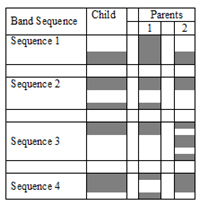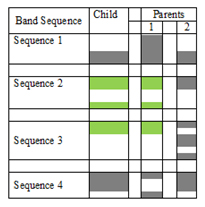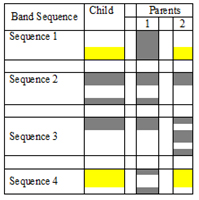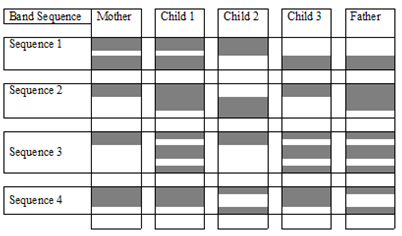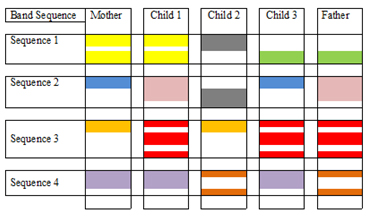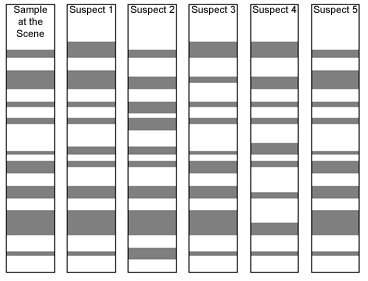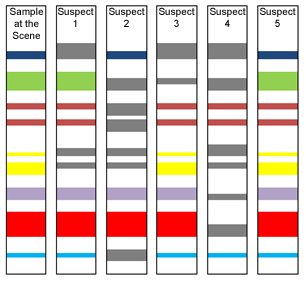The diagram at right shows a simplified DNA fingerprint. Every child receives half of their genes from one parent and the other half of their genes from the other parent. The first column shows the results from electrophoresis from the child. The next two columns show the electrophoresis results from the parents. When scientists analyze DNA fingerprints they are looking for matches in the length of the bands.
